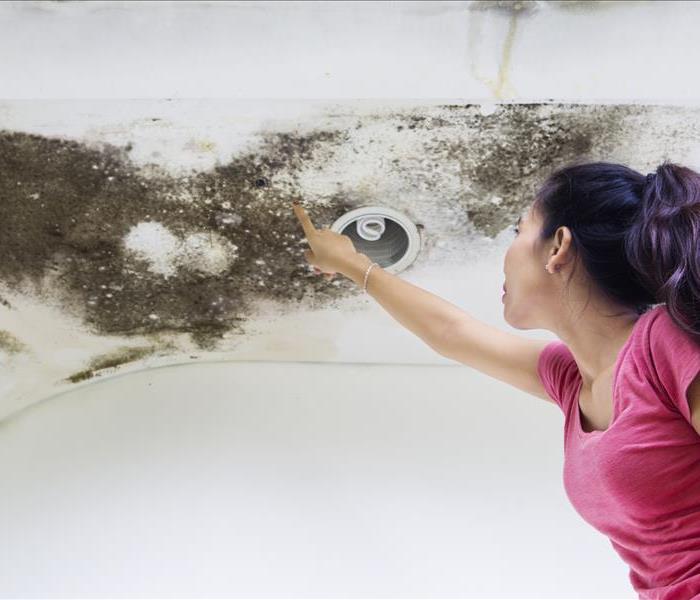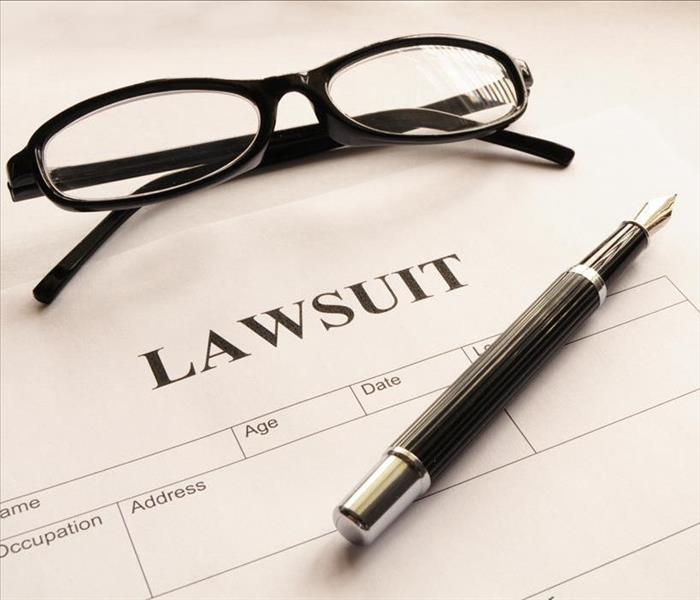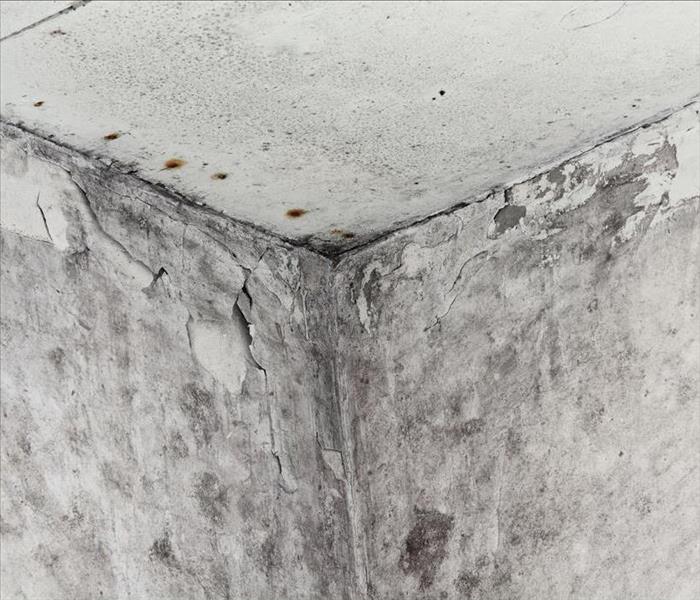Archived Mold Remediation Blog Posts
Insurance Coverage Tips for Mold Remediation
3/21/2022 (Permalink)
 Know more about Mold Insurance Coverage by Following These Tips.
Know more about Mold Insurance Coverage by Following These Tips.
If you smell a musty odor as you walk through the front door of your home in Clearfield, UT, it may be a sign that you have a mold problem. Fungus growth not only can be difficult to get rid of but also may cost you a lot of money by the time mitigation is done.
To further complicate matters, many homeowners' insurance policies don't fully cover mold remediation. Here are some tips on how to proceed if you suspect you have a problem.
Know Your Homeowners' Insurance Limits on Fungus Growth
One reason that it is so difficult to find a home insurance policy with mold coverage is that most growth stems from long-term water damage that has not been mitigated. To your provider, this comes across as negligence, because regular inspections and maintenance can help you avoid such a problem. Most homeowners' insurance policies only cover mold that directly results from a covered peril:
- Fire prevention measures
- Sudden and hidden attic leaks
- Extensive flooding from a pipe break
Some homeowners' policies specifically exclude mold in their coverage. This is especially common for those who live in humid areas or who have homes made from materials that are particularly vulnerable to fungus growth. If either of those factors applies to your home, it may be very difficult to file a successful claim to cover any mold remediation.
Use Detailed Reporting To Maximize Your Policy's Limits
A mold provision in your policy may only cover mitigation up to a certain dollar amount. To ensure that you are getting the most out of your coverage, be careful how you list the specific mitigation steps on your claim. Even if you have mold insurance, vague reports can use up your mold damage remediation limit in a hurry.
For example, waterlogged drywall will need to be removed and replaced regardless of whether it has mold growth on it. There may be an additional surcharge if fungus remediation is included in that process, but only the additional amount should be included under the mold clause of your policy. Make sure your claim reflects not only the tasks you're being charged for but also the specific reason for each itemized expense.
Take the Appropriate Steps To Remedy the Problem
Upon discovery of a fungus issue in your home, you should take a few immediate steps. First, call mold damage mitigation experts to get the cleanup process started as quickly as possible. Next, try to contain the affected area so that the spores don't spread. Close doors and other airways to block it off from the rest of the house. Turn off your HVAC unit or close the vents to the room to further seal it off.
It may be tempting to try to clean the moldy area yourself, but it's better to wait for the professionals. If you do anything to disturb the patch of fungus growth, you may make the problem worse. Leave it alone and wait for the technicians to arrive and assess the damage.
Mold damage to your home can be expensive to mitigate, and there's no guarantee that your homeowners' insurance will cover it. Understanding your policy and knowing the best way to deal with damage will help you minimize your out-of-pocket costs.
Avoid Lawsuits and Negative Mold Insurance Claims
11/8/2021 (Permalink)
 Be sure to make proper maintenance in your Clearfield, UT property to avoid lawsuits from tenants.
Be sure to make proper maintenance in your Clearfield, UT property to avoid lawsuits from tenants.
Property owners are responsible for providing a safe environment that is free from unreasonable risks. For example, if a client or tenant trips and is injured because of the related fall, the property owner may be held liable for the costs associated with the accident. Unfortunately, there are many types of conditions that could be considered dangerous:
- Uneven steps
- Slippery floors
- Falling items
- Lack of lighting
- Limited security
- Defective appliances
As the owner or manager of a commercial property, you could find yourself liable for any injuries that occur because of these conditions, as well as others. A lot of property maintenance issues are easy to spot and recognize, but some are less obvious, such as mold growth. The consequences of missing signs of mold often include mold insurance claims and lawsuits from tenants.
Potential Mold Insurance Claims and Lawsuits
The rules governing when and how a lawsuit can be filed vary from state to state, but most states maintain an implied warranty of habitability, meaning that property owners and managers are required to maintain the building and make sure it is safe, livable, and workable. If you fail to provide adequate care and maintenance for the property and mold causes damage, tenants can sue.
Non-Disclosure
If you knew that mold or related damage was present and you didn't warn disclose this to the tenant, you may face a lawsuit. It is illegal for you to keep this information quiet. If serious damage or injury occurs as a result of the mold, you could face hefty financial penalties.
Uninhabitable Situation
Once the presence of mold is obvious, professional mold remediation must take place quickly. Otherwise, the tenant can legally withhold rent or move out of the property (with or without a contract). Remember that the cost of remediation is usually easier on your budget than the costs associated with lawsuits. Reach out to your insurance provider to learn more about your mold insurance claims.
Lack of Reimbursement for Repairs
Tenants may arrange for cleanup and repairs on their own, and you may be required to reimburse them for those repairs. This is especially true if you neglected to arrange for repairs within a reasonable amount of time. If your tenant has to sue for reimbursement, you'll end up paying more than you would have for the original amount of the mold claim.
Injuries
Mold growth can cause a lot of property damage, including weakening the structural integrity of walls, floors, and ceilings. If that damage leads to a situation where a tenant or someone visiting the property is injured, you may be subjected to a lawsuit.
Proof of Neglect
Don't dismiss your tenants' concerns about the presence of mold. If tenants reach out to professionals for environmental testing or a damage assessment and you do nothing about the findings, there's a good chance that you'll face a mold growth lawsuit.
It is possible to make mistakes in your efforts to be a responsible property owner in Clearfield, UT, but what you don't know can still land you in legal trouble. Avoid the legal and financial penalties of failing to work through cleanup, remediation, and mold insurance claims by arranging prompt professional action.
7 Mold Prevention Tips
9/9/2021 (Permalink)
 Controlling water damage will prevent mold growth in your Clearfield, UT building.
Controlling water damage will prevent mold growth in your Clearfield, UT building.
Mold occurs naturally in the environment and can grow almost anywhere. Water damage can accelerate mold growth because mold tends to thrive in moist environments. These seven tips can help you avoid mold in your buildings.
How to avoid mold
1. Identify Problems and Correct Them
Inspect your buildings and look for conditions that could promote mold growth, such as areas that tend to flood, leaking pipes, condensation, leaks in the roof, or other sources of moisture. Remove and discard any wet carpeting, drywall, or ceiling tiles. Repair leaking pipes and equipment. Take steps to reduce flooding, such as installing sump pumps or regrading outdoor areas to direct water away from your buildings. Have your HVAC system inspected and repaired if condensation is a problem.
2. Remove Excess Moisture Promptly
Most mold growth results from excess moisture in the environment. If you have had water damage in your building, contact a remediation company in Clearfield, UT, to quickly dry out your property. Aim to completely dry your property within 24 to 48 hours. Remove wet furniture, carpets, and other difficult-to-dry items from the building. Some items may be able to be dried and restored. Others will need to be discarded.
3. Install Proper Ventilation
If your business engages in activities that produce moisture, a key part of mold prevention is ensuring proper ventilation. Any bathrooms, kitchen areas, laundry facilities, and other high moisture areas should have ventilation systems to remove excess moisture to the outside. You can also reduce moisture by using dehumidifiers. Energy-efficient buildings can sometimes trap moisture inside, so it may be useful to occasionally open windows or doors.
4. Monitor Indoor Humidity
The Environmental Protection Agency recommends humidity levels be kept between 30% and 60%. Excessive humidity can cause condensation on pipes, walls, and windows. Purchase a humidity monitor and take steps to adjust the humidity levels in your buildings as needed. Humidity levels change throughout the day, so take multiple readings at different times. You can use air conditioners and dehumidifiers to reduce humidity levels.
5. Use Mold-Resistant Materials
If you need to construct a new building or remodel an existing one, use mold-resistant materials. Mold-resistant drywall and sheetrock are available for interior walls and you can cover these materials with mold-resistant paint.
6. Use HEPA Filters and Ultraviolet Lights
If your buildings have carpeting, use a vacuum with a HEPA filter when you clean to remove mold spores from carpets and flooring. You can also use these vacuums to clean air vents. Installing ultraviolet lights in mold-prone areas, such as HVAC systems, can also help.
7. Don't Store Materials in Damp Areas
Cardboard boxes and other items made from paper or fabric are particularly susceptible to mold. Avoid storing these items in damp areas. Throw out anything that has mold on it that can not be restored.
Because mold needs water to thrive, controlling water damage is the key to avoiding mold problems. However, it is not always possible to completely avoid mold, so if you do encounter it, take steps to remove it before it can spread to other areas of your building.
5 Places To Check for Mold Growth in Your Home
6/28/2021 (Permalink)
 Mold hides and growth easily in Clearfield, UT homes.
Mold hides and growth easily in Clearfield, UT homes.
Mold spores exist virtually everywhere, so it's no surprise that it's regularly found growing in various areas indoors. Sometimes you can tell when there's mold in the area due to its musty odor. However, it's very good at hiding so that you may not find it until it's out of control. Here are five places where mold damage commonly hides in homes:
1. Basements
Many basement areas are prone to mold growth; basements tend to have more humidity and moisture than other areas. Look for signs of mold or mildew growth around foundation cracks, windows, vents, around a sump pump, and around pipes and ductwork. Ideally, water damage restoration professionals will inspect the area; leaks and condensation can quickly cause mold to grow.
2. Bathrooms
There are several places to look for mold in bathrooms. Pipes, cabinets, shower curtains, and doors, bathtubs, showers, sinks, toilets, counters, tiles, flooring, and even bathroom rugs are the perfect havens for mold. In addition, storage caddies and sponges can also harbor mold.
3. Attics
Attics often contain a big part of your home's ventilation system, so having mold in the attic can lead to a huge problem. This is because mold spores can spread through the rest of the house through the ventilation system. Look for mold damage around the roof, especially in the case of leaks (e.g., from the water heater, furnace, or vents).
4. Laundry Rooms
Water connections to the washing machine can grow mold. Leaving damp clothes in the washer or dryer can also begin growing mold quickly. Even dryer lint buildup can increase your chance of mold and mildew growth.
5. Behind Walls
Mold can begin growing behind walls without you knowing it exists. Always look out for leaks or excess moisture on walls. Mold can grow on and through the drywall.
The key to avoiding mold damage in your Clearfield, Utah, home is to keep moisture and humidity down. Make sure you're free of leaks, adequately insulated and ventilated. If you find that your relative humidity is high in your home, consider using a dehumidifier.



 24/7 Emergency Service
24/7 Emergency Service



